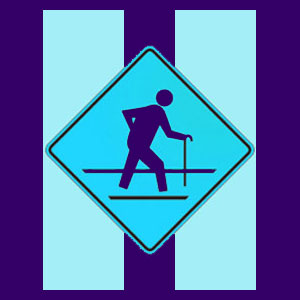
Spinal aging is an inevitability for every person as they get older. There are several distinct aging processes which occur in the spine as part of its natural lifecycle. Although these processes are universal, normal, typical and expected, they are still illogically often blamed for creating painful symptoms in the back and neck. In some patients, degenerative processes may well accurately account for symptoms, but in others, these same processes may be innocent of all blame and coincidental to any symptoms experienced.
This dialog focuses on the various aging processes that are experienced by the vertebral column, as well as detailing the consequences of spinal degeneration.
Spinal Aging Processes
The most common and recognized types of spinal degeneration which occur include:
Arthritis in the spine is common in the lumbar and cervical regions. Osteoarthritis is not generally overly symptomatic in the spinal column, although in rare instances certain factors can enact pain or neurological symptoms. The most implicated types of arthritic change in the back pain sector include facet joint syndrome and problematic osteophyte complex formation often blamed for causing spinal stenosis or foraminal stenosis.
Degenerative disc disease occurs when discs dry out and shrink. Once again, this condition occurs in the lumbar and cervical regions predominantly and is virtually universal. This is typically the first degenerative process to leave visible evidence on diagnostic imaging studies, such as spinal MRI or X-rays.
Spinal Aging Facts
There is little, if any, statistical and research supported correlation between the incidence of back pain and the existence of any spinal degenerative process. In fact, as spinal degeneration increases with age, the incidence of back ache drastically drops.
Most patients with chronic symptoms which are unresponsive to treatment are not elderly. The majority of unresolved back pain complaints occur in patients in the ages of responsibility: 28 to 55. This is certainly not the time when musculoskeletal aging is at its worst, but it is the time when life pressures may provide just the right stimuli for psychosomatic back pain to commence. This is the exact explanation offered by many back pain experts, such as Dr. John Sarno of the Rusk Institute / NYU Medical Center.
A notable exception to this theory is certainly the occurrence of spinal stenosis in the elderly, which is almost always brought on by degenerative changes in the spine. Of course, stenosis can be innocent also, even when noticeable on diagnostic testing, but can also be painful and even debilitating when the condition applies significant pressure against the spinal cord or spinal nerves.
Spinal Aging is Normal
Some doctors believe that disc degeneration actually goes through phases, including symptoms producing bulges and osteoarthritic interactions as vertebrae move closer to one another earlier in life, and less symptomatic complete desiccation later in life. This might help provide some semblance of logic to the structural model of pain, but this only applies to some patients and still supplies just as many questions as it does answers.
Patients who have been diagnosed with back pain due to mild to moderate typical spinal degeneration are not likely to recover, supported by treatment statistics for both traditional and complementary therapies. This is not my verdict, just a simple observation based on clear cut clinical research. The reason for this lack of resolution in degenerative cases is not that the structural damage is so severe. In most cases, the reason for the continued pain is simple misdiagnosis, leading to failed treatment after failed treatment and often, failed back surgery.
Be careful pursuing therapy for seemingly normal degenerative conditions! Do your own research and you may just see that these conditions are simple scapegoats for pain far more often than the villains your doctor may be trying to portray them as.
Just remember the most important point of this article and that is certainly the simple truth of aging being universal, while back pain and the various types of symptoms are not. Food for thought.




